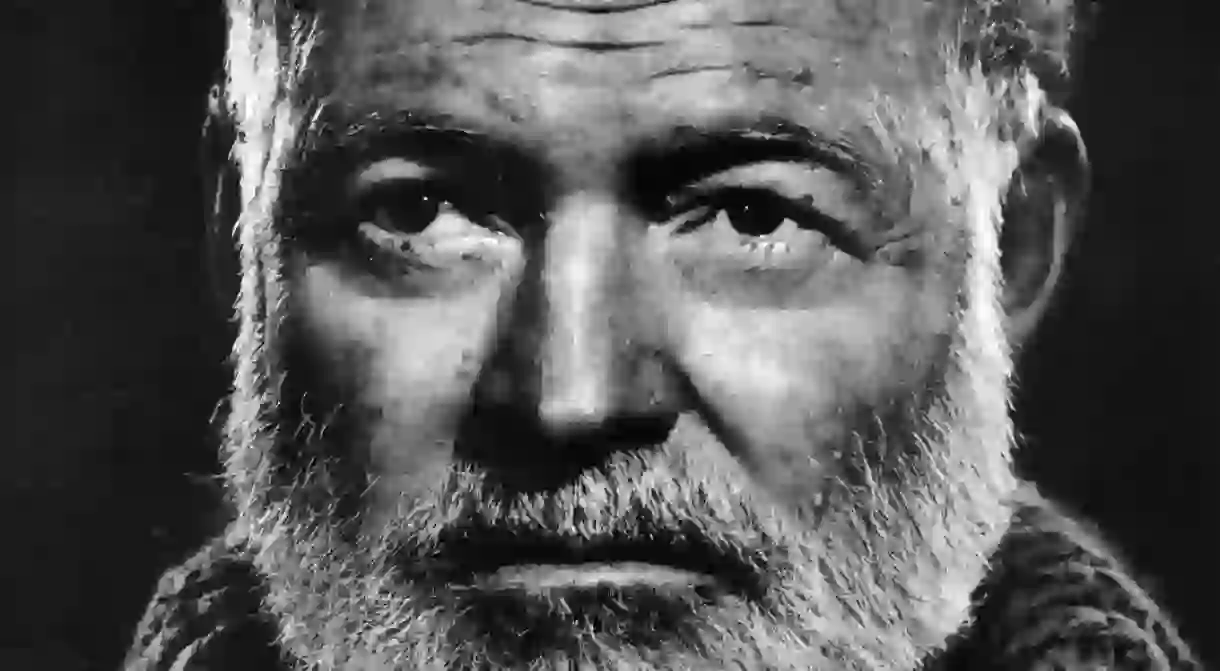A Look at Five of Ernest Hemingway's Most Memorable Novels

We take a look at five of the most memorable Hemingway novels.
The American author Ernest Hemingway was one of the most influential writers of the twentieth century. His machine-like style was precise and austere, but he also had a deft and gentle turn of phrase which gave his work its own peculiar beauty and power. He was a master of the action genre, but he also wrote passionately about love and life, war and work. Though Hemingway is often seen as the archetypal American writer, many of his books have a European air. Hemingway certainly experienced Europe – he drove ambulances in Italy in the First World War, worked as a journalist in the Spanish Civil War, and lived alongside other modernist artists and writers in Paris in the 1920s – and his love for these countries, especially Spain, and their culture permeates his work. Here is a selection of the best of these books below:
For Whom the Bell Tolls
Hemingway’s greatest novel, For Whom the Bell Tolls, is another war-story about an American, Robert Jordan, and is again based on Hemingway’s real-life experiences during the Spanish Civil War, where he was a journalist and war reporter. Robert Jordan is an experienced explosives expert in the International Brigade, fighting for republican guerillas against the fascists, and is assigned the task of destroying a strategically-important bridge before an attack on the city of Segovia. But it is also a love story between Robert and Maria, as well as an ode to Spain and Spanish culture (especially bullfighting), which Hemingway clearly loved. For Whom the Bell Tolls explores themes of honor, death, duty, love, nature, camaraderie, innocence, war, modernity, salvation, the value of human life and man’s motivation. The juxtaposition of themes of death and suicide against camaraderie and sacrifice is of major importance in this novel, giving it a huge literary significance. It is widely agreed to be one of Hemingway’s best works.
“There is no one thing that is true. It is all true.” – For Whom the Bell Tolls
The Old Man and the Sea
The Old Man and the Sea was the last novel published by Hemingway. The novel depicts a story of Santiago, an old and experienced fisherman whose unlucky 84-day streak of failing to catch a fish comes to an end when he snags an enormous marlin and starts a three-day long battle with his gigantic prize. The Old Man and the Sea is known for its multi-layered and multi-textural meanings, themes and motifs, as it explores pride, honor, glory, life, death, redemption, martyrdom and Christ’s struggle. It won the Pulitzer Prize for Fiction in 1953 and contributed to Hemingway’s Nobel Prize for Literature in 1954.
“But man is not made for defeat… A man can be destroyed but not defeated.“ – The Old Man and the Sea
The Garden of Eden
This uncompleted novel was published in 1986 about 25 years after Hemingway’s death and follows an American writer named David Bourne and his wife, Catherine, during their time in France and Spain. During their honeymoon the Bournes meet a young woman named Marita with whom they both fall in love, causing the deterioration of their relationship. This book deals with the exploration of gender-roles and androgyny as well as the contempt and hatred that is felt between the newly-wed couple.
Farewell to Arms
The title to Hemingway’s third book, A Farewell to Arms, is taken from the poem by George Peele, a 16th century poet and dramatist. A Farewell to Arms follows the first-person account of an American lieutenant in the ambulance corps of the Italian Army, during the First World War. Henry’s fictional experiences in this story are similar to those that Hemingway himself experienced during the conflict, including being wounded by a mortar shell and falling in love. Hemingway provides insight on the pains caused by a war-ravaged world and challenges perceptions of war.
“The world breaks every one and afterward many are strong at the broken places. But those that will not break it kills. It kills the very good and the very gentle and the very brave impartially. If you are none of these you can be sure it will kill you too but there will be no special hurry.” – A Farewell To Arms
The Sun Also Rises
The publication of The Sun Also Rises (published under the title Fiesta in the UK) saw Hemingway’s fame and standing as author grow considerably. The story follows a group of American and British men and women who travel from Paris to Pamplona to watch the running of the bulls (encierro) and bullfighting at the festival of San Fermin. It particularly explores the relationship between Jake Barnes, the narrator and central character, and the unpredictable Lady Brett Ashley, who love one another but cannot be together as a war-wound has left Jake impotent. Hemingway invites you to enter the hedonistic lives of the post-First World War European elite, a world of parties, sex and drama. The descriptions of bullfighting and matadors are particularly eloquent and powerful, and you can feel Hemingway’s love for and admiration of this sport, which he considers an art form.
“Isn’t it pretty to think so.” – The Sun Also Rises
To Have and Have Not
To Have and Have Not is Hemingway’s fourth published novel. The story’s protagonist, Harry Morgan, is a fishing boat captain, who runs illegal importation and exportation between Cuba and Florida. Between the anguish of the Great Depression, and after being swindled by one of his customers, Morgan is forced to make ends meet by taking jobs on the wrong side of the law. While struggling through this tough line of work, Morgan’s luck turns against him and things start going badly. To Have and Have Not is a great example of Hemingway’s simple yet effective prose, his classic strong character development, and his magnificent story-telling ability.













